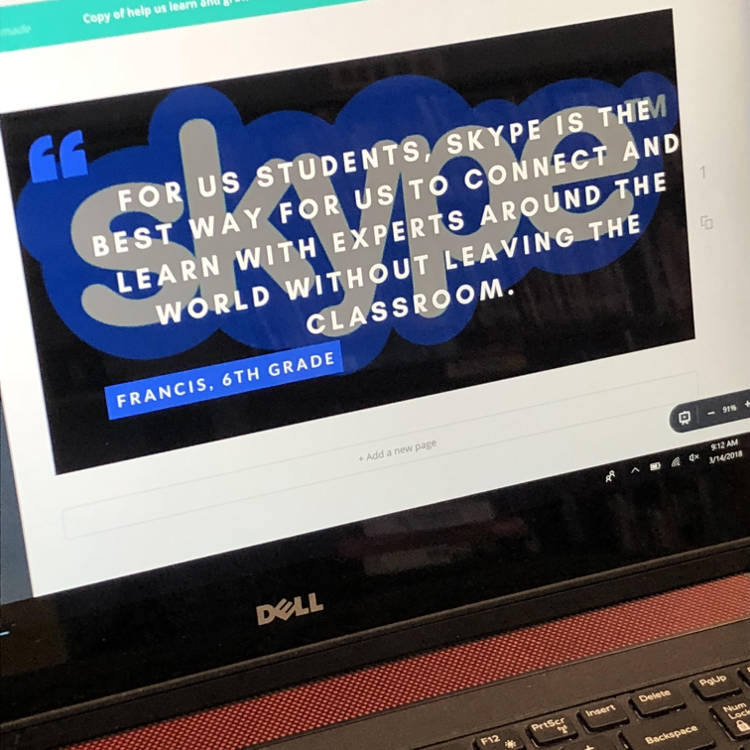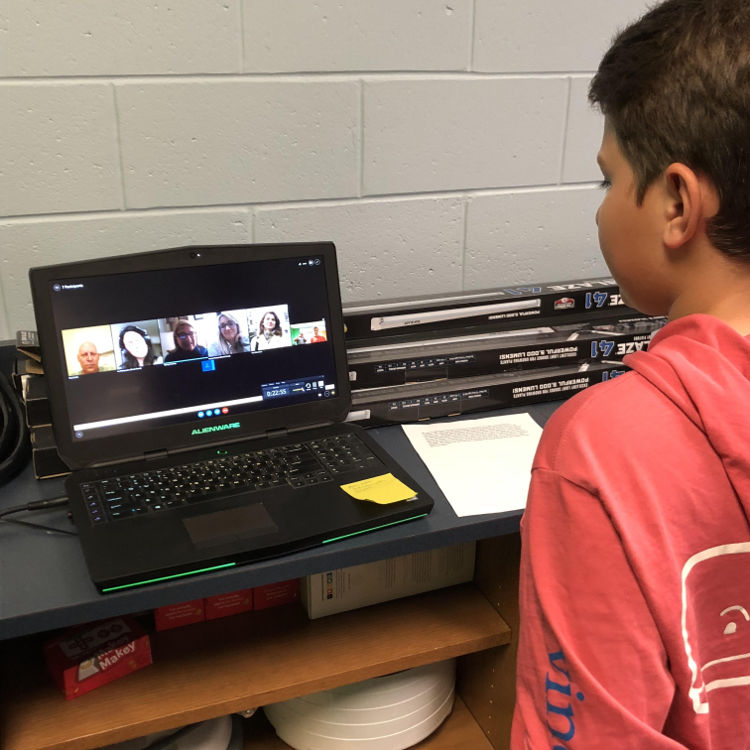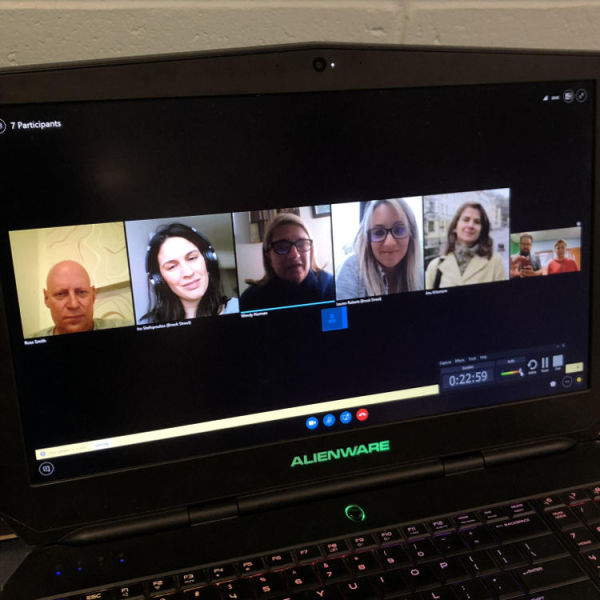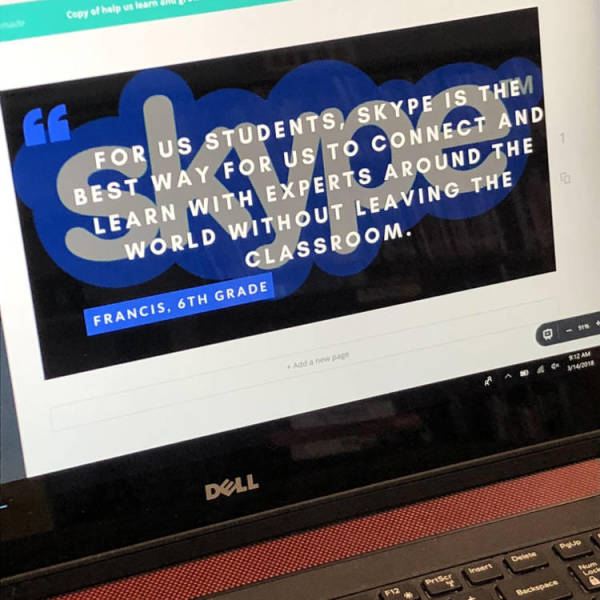Taking Student Voice Beyond The Classroom


I decided to make student voice part of my life’s work in 2013, at the start of my 6th year teaching Sophomore English. I started that school year with one goal: to take what students loved and incorporate it into the classroom. I made this my mission because I had been teaching the lowest track of English since I started my career. My students hated school and made it clear on a daily basis that they didn’t want to be there let alone wanted to do any work. I was tired of it. Especially because there was nothing wrong with them, they had just been let down by the education system. I wanted to win them back and I knew loving what they loved could help me do it.
I started embracing student voice by asking them “how do you want to show me what you learned?” at the end of every unit. I gave them a week to answer that question and they created amazing things. Students came up with all kinds of great projects that married their classwork with their passions. I had so many engineering, art, and computer science projects in my class that administration actually asked me if I was even teaching English. Students’ grades, and more importantly their attitudes, improved drastically. And every year it got better.
Fast forward for 3 and a half years. It is 2016 and I’m just starting my current job at Fair Haven. The Innovation Lab, the class I made to cultivate growth mindset as I expose students to design thinking, computer science, engineering, and the digital arts, is in its first year. Student voice was still the driving force in my pedagogy as the class was designed around students creating their own STEAM projects.Deconstructing donated electronics and then trying to put them back together was a favorite project back then, as it still is today. Often students couldn’t get the electronics back together, so we were left with a lot of junk for the recycling center. Some students had a problem with this. “Can we make something out of the parts?” students asked. “Absolutely,” I said. The Parts to Arts project was born.
Students made all kinds of neat pieces of jewelry and sculptures out of disassembled electronics, but students quickly realized that now we just have a bunch of upcycled art sitting around. “Can we try to sell it?” students asked. “Absolutely,” I said and I built them an online store to sell their upcycled goodies. They named the store FH Gizmos. FH Gizmos launched in May of 2016. We made $8 that school year. The next school year, 2016-2017, we made about a $100, but FH Gizmos also got an amazing email.
Slack, the massive communication company, had seen pictures of the stuff students were creating on Twitter. They had asked if we could make them something for their new education center to help employees focus. It took us the rest of that school year, all the way until October of this school year, but we did it. While some schools banned fidget spinners, we sold 50 professional quality fidget spinners to Slack. From upcycled jewelry to a manufacturing contract with Slack, my kids were hooked on entrepreneurship because it was theirs. I didn’t realize that entrepreneurship was the missing piece of the Innovation Lab, they did. The class became so popular that it evolved into a full program, FH Innovates, and FH Gizmos became its own class in a lineup of four student-driven classes.

At the same time I started the Innovation Lab in 2016, I was invited to a gamification conference at UPenn. There I was paired up in a session with Ross Smith, Director of Engineering at Microsoft’s Skype. We hit it off over our shared love of video games and student voice. We’ve kept in touch since then. This winter break, 2018, Ross emailed me to ask how I was doing. I got him on a Skype call, told him about FH Gizmos and the work we did for Slack, and had my students pitch him on ways Skype and FH Gizmos could work together. Fast forward six months, 4 student-led meetings, and over a dozen pitches later and FH Gizmos and Skype are joining forces on a new cooperative: We know student voice can revolutionize their learning, but can it revolutionize the edtech they use? Skype and my kids plan to find out!
Here’s Ross:
Tech & Learning Newsletter
Tools and ideas to transform education. Sign up below.
One of the most inspiring things about working at Skype is being able to hear about how people use Skype to do good in the world. From soldiers seeing their first born over Skype to kids talking with grandparents to teachers using Skype to connect classrooms. Several years ago, we started a program called Skype in the Classroom which is a network educators can use to find guest speakers, virtual field trips, and classroom-to-classroom connections – all free – to help break down the classroom walls and expand learning. We hear great stories such as students from locations where they may never normally travel 40 miles from their home in their lifetime – connecting with other classrooms around the world. As excited as we are about what we’ve done, our work has been with educators and partners – and our feedback from students has been anecdotal at best. As he mentioned, I was fortunate to meet Chris through our work on games in the classroom – and am inspired by this latest partnership.
Student voice has been eye opening for us on the Skype in the Classroom team. In the last few months of working with Chris and his students, we have heard some great ideas, many of which we hope to implement – and we have had some of our own thoughts validated, as well as some disruptive thinking. It’s been great to connect the students directly on Skype calls with our team.
Clearly there is a lot of research and guidance on “connecting with customers” – and work on “lead user innovation” and a lot of our work has been focused on educators. It’s been great to work with Chris and the Innovators of FH Gizmos on how we can capture student voice for to make our program even more impactful and useful for students and teachers. As we approach back-to-school in September, we are looking forward to exploring many of the ideas that the students have suggested so far, and are excited to continue to brainstorm ideas for how we can improve our experience to better suit the needs and interests of students. Personally, I am so thankful to cross paths with Chris and to to be a part of this wonderful program with his students!
We are in the midst of dramatic societal change. Students today will enter a very different workforce. Globalization of the workforce will have an impact on their future. Generational changes – people are living and working longer will influence the opportunities ahead. Every company is a tech company now, influenced by the pervasiveness of the internet and social media. Just as importantly, the internet and social media provides a platform for students to drive change. It’s why I’m so excited about this partnership.
When we think about how to best introduce students to “new collar” jobs and 21st century skills, what could be better than to introduce them live to a data scientist over Skype? Host a live chat with a VR engineer? Skype in the Classroom opens up an opportunity for students to engage directly with expert in these new collar jobs. And as we work with Chris and his students, we can tailor our programs to help make a difference to introduce students to possibility of these 21st century jobs, serving the students and the needs of employers.
We live in a fascinating age of change – and Chris is doing incredible work to prepare his students for a new world of entrepreneurship and a “gig economy” – the skills that these students are developing will serve them well in this new world.
I wish I had this when I was a grade schooler… I am so optimistic for the future!

Back to me.
I’m optimistic, too. This is an opportunity to take student voice to the next level as we work directly with Skype as we make Skype in the Classroom as empowering for students and teachers as possible. We have three different initiatives we’ll be working on with Skype: amplifying student voice and experiences using social media, creating a guide to help students help teachers use Skype in the Classroom, and making it even easier for teachers and students to connect with the experts they want to bring into their classroom. As we kick off in September, I’m excited to continue to see my students take ownership of their own learning and use the empathy skills we’ve been learning through design to help make Skype in the Classroom even better for everyone. Just as student voice revolutionized my classroom, I believe my kids will be able to help revolutionize the technology they use by sharing their voice.
Next time, I will walk you through what students have done so far, how they are sharing their voice, and where we plan on going.
Until Next Time,
GLHF
cross-posted at Teched Up Teacher
Chris Aviles presents on education topics including gamification, technology integration, BYOD, blended learning, and the flipped classroom. Read more at Teched Up Teacher.
Chris Aviles is a STEM teacher, edtech specialist, and president of Garden State Esports. He is also a regular contributor to Tech & Learning.
